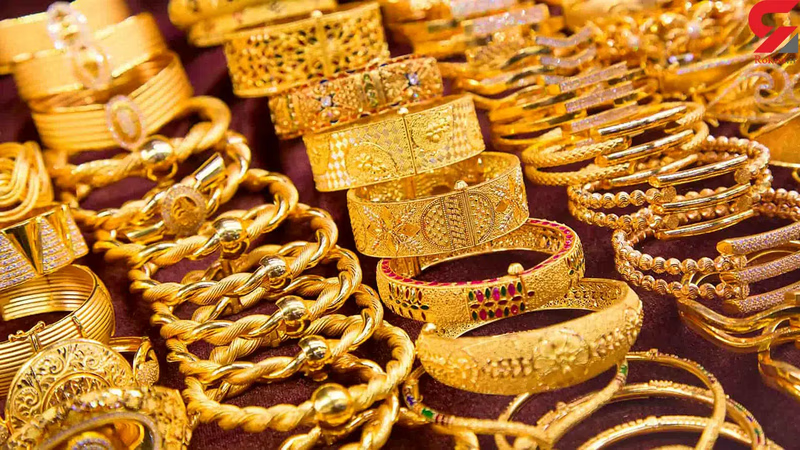
Explore gold jewelry options in Middle East markets.
One of the traditional and reliable ways to trade jewelry is through established jewelry stores and boutiques. These retail establishments offer a wide range of jewelry options, including gold, diamonds, gemstones, and designer pieces. They often have experienced staff who can assist you in selecting and purchasing jewelry. Look for reputable stores with a good track record and a wide selection of high-quality jewelry. Gold souks or traditional markets are prevalent in many West Asian countries, such as the famous Gold Souk in Dubai, United Arab Emirates. These markets are known for their extensive selection of gold jewelry, including intricate designs and unique pieces. Exploring these markets can provide you with a variety of options and potential opportunities for negotiation. However, it's important to exercise caution and ensure the authenticity of the jewelry when buying in such markets.
In the Middle East, personal connections and networking often play a significant role in jewelry trading. Engaging in private sales through personal contacts, referrals, or networking within the jewelry industry can provide access to unique and exclusive pieces. However, caution should be exercised to ensure trustworthiness and authenticity when dealing with private sellers. Jewelry trade shows and exhibitions are held in various countries in the Middle East, bringing together jewelry industry professionals, designers, and buyers. These events provide an opportunity to explore a wide range of jewelry options, discover emerging designers, and establish business connections. Research upcoming trade shows and exhibitions in your region and plan to attend those relevant to your interests.
In general, we have 4 types of precious stones (diamond, emerald, sapphire (beryl) and red ruby) and a large number of semi-precious stones such as amethyst, citrine, topaz that the landing of these stones on gold turns it into jewelry. What stone to prioritize when buying jewelry or to determine the quality of the stone is the concern of many jewelry buyers; In general, gemstone is valuable for 3 reasons.
Beauty and radiance, scarcity and durability; brilliant stone, which is a type of diamond, is higher in brilliance and durability than other stones, and since it has been well managed since the beginning of exploration, it has a good supply and demand market, but emerald and sapphire stones are more rare. And their high quality is very valuable and makes them more and more expensive, but it is beyond the ordinary people to recognize the quality of all stones.
For example, you may buy a diamond ring that the seller will charge a lot of money for the stone worked on, but when you sell, you will find that the diamond used in the ring is bad because of its bad cut and impurities, and the value of the money you paid. To avoid this problem, the only way left is to buy from jewelry stores that are reputable and guarantee the purchased item.
Reputable jewelry stores will deduct only 15 to 20 percent of your payment when you sell, while if you do not have a valid invoice, you may incur a large loss when selling jewelry.
- Sale of gold = daily price per gram of gold + manufacturing wages + profit seller (7 or 8%)
- Sale of jewelry = daily price of gold + wages including (value of stones used / wages for making jewelry base / expenditure and other costs) + profit seller (15% to 20%) as the method of buying gold differs from jewelry, their terms of sale by consumers are also different.
In work made of gold, the construction wage and the seller's profit are deducted and purchased at the daily rate, but how to sell jewelry, which I emphasize and order, be careful in maintaining the purchase invoice. It is the case that the seller's profit (15% to 20%) is deducted from the daily price listed in the invoice and its price is paid to its owner.
With the rise of e-commerce, online platforms and marketplaces have become popular channels for trading jewelry. Websites and apps dedicated to jewelry sales offer a wide range of options, allowing you to browse and purchase jewelry from the comfort of your home. However, when buying online, it's crucial to research and choose reputable platforms, verify seller ratings and reviews, and ensure secure payment methods and return policies. Auction houses can be an excellent option for trading high-end or unique jewelry pieces. Auctions provide a platform for buyers and sellers to engage in competitive bidding. Look for reputable auction houses that specialize in jewelry auctions and follow their auction schedules. Participating in auctions requires thorough research, knowledge of the jewelry being auctioned, and being prepared to compete with other buyers.
-
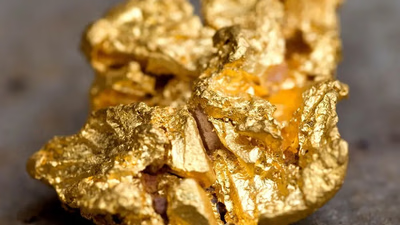
Understanding the intricacies of buying and selling jewelry and gold is crucial for successful transactions. Key factors include recognizing different types of jewelry, such as fine, fashion, and antique pieces, as well as understanding gold"s purity, weight, craftsmanship, and market trends. Authenticity verification is essential; look for hallmarks indicating metal purity and request certificates for gemstones from reputable labs. Assess the condition of items carefully, considering aspects like damage and overall craftsmanship. Negotiation skills are vital; clearly communicate expectations and document transaction details to prevent disputes. Security during transactions should not be overlooked—conduct them in reputable locations and consider secure payment methods. Familiarity with legal regulations regarding jewelry sales in your area is also important. In the Middle East, 18-carat gold is preferred due to its balance of quality and value.
Buyers should be aware of the emotional significance of jewelry while also staying informed about market prices to ensure fair transactions. Engaging with trustworthy sellers or buyers can enhance the experience and lead to better deals. "
-
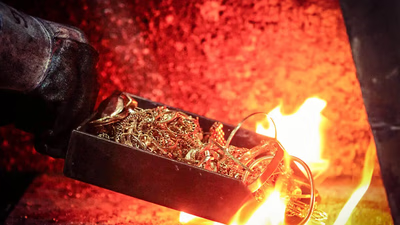
Western Asia"s jewelry making is characterized by a blend of traditional craftsmanship and modern techniques. Each region showcases unique styles, with methods like filigree and engraving being prevalent. Jewelry serves not only as adornment but also reflects cultural identity and social status, playing a vital role in weddings and religious ceremonies. Major cities such as Istanbul and Dubai are key players in the jewelry trade, with Dubai being a significant hub for gold and diamond transactions. Wages for jewelry makers vary across the region; in the UAE, they range from AED 2,000 to AED 6,000 monthly, while in Saudi Arabia, they range from SAR 3,000 to SAR 7,000. Turkey"s wages fall between TRY 2,000 to TRY 5,000. The complexity of designs influences wages significantly; handcrafted pieces command higher prices compared to machine-made items. The global demand for unique jewelry continues to rise, with Western Asia exporting significant quantities of gold and diamond pieces that highlight its rich craftsmanship. The influence of Islamic art is evident in many designs, incorporating geometric patterns and calligraphy that reflect cultural heritage.
-
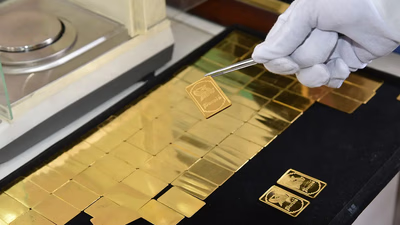
Factors influencing gold prices include global economic conditions, interest rates, inflation, currency fluctuations, and geopolitical tensions. Historical data analysis reveals patterns that can inform future price movements, although past performance is not a guarantee. Technical analysis of price charts and indicators aids in identifying trends and potential targets. Broader macroeconomic factors such as economic growth rates and trade dynamics also play a role in shaping investor sentiment towards gold as a safe-haven asset. Recent trends show a positive outlook for gold, with analysts predicting prices may reach $1,800 soon but face challenges ahead. Research firm Murenbeeld & Co forecasts average prices of $1,806 in Q2 2021 and $1,900 by Q1 2022. However, uncertainties surrounding the economic recovery and inflation persist. The rise of Bitcoin poses competition for gold"s market value, with analysts noting a 2.
5% reduction in gold"s value due to Bitcoin"s increase. Understanding supply-demand dynamics is crucial; factors like production levels and investment demand significantly impact pricing. Staying informed through expert opinions and market forecasts is essential for navigating the complexities of gold pricing. "
-

Jewelry trading in West Asia offers various avenues, including established jewelry stores, traditional gold souks, and private sales through personal networks. Reputable stores provide a wide selection of high-quality pieces and knowledgeable staff to assist buyers. Gold souks, like Dubai"s famous Gold Souk, offer extensive options but require caution to ensure authenticity. Networking plays a crucial role in accessing exclusive pieces through private sales. Trade shows and exhibitions are valuable for discovering new designers and establishing industry connections. Buyers should prioritize reputable sources to avoid issues with gemstone quality and pricing discrepancies. The sale of gold differs from jewelry, with specific pricing structures based on daily rates and seller profits. E-commerce platforms have gained popularity for jewelry purchases, but buyers must research sellers thoroughly to ensure secure transactions.
Auction houses also present opportunities for acquiring unique pieces but require knowledge of the auction process. "
-
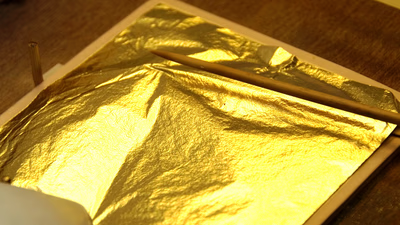
West Asia has a rich history of gold discovery and trade, dating back to ancient civilizations like Mesopotamia, where artifacts from around 3000 BCE were found. Ancient Egypt also played a significant role, mining gold from the Nubian and Eastern Deserts for jewelry and trade. The Persian Empire further contributed to gold accumulation, with kings using it to finance military campaigns. The rise of the Arab Caliphates in the 7th century CE established key trade routes that facilitated gold exchange across Asia, Africa, and Europe, with Baghdad emerging as a center for gold craftsmanship. Gold"s allure continued through history, being used in various important objects and maintaining its status as a precious metal. In modern times, China has become the largest producer of gold, while countries like Saudi Arabia and the UAE have significant reserves. Dubai has evolved into a major trading hub for gold, showcasing its ongoing importance in global markets. "
-
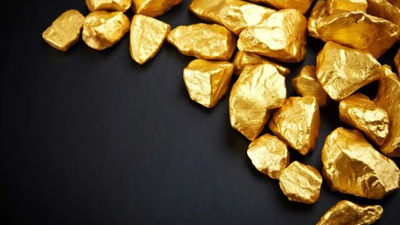
Gold has been a valuable medium of exchange for over 6,000 years due to its rarity and durability. While its use as currency has diminished, gold remains integral in various industries, particularly electronics. It is a key component in devices like smartphones and computers, where it serves as a reliable conductor that resists corrosion. The demand for gold in electronics is significant, with billions of mobile phones produced annually, each containing small amounts of gold. Additionally, gold"s applications extend to dentistry and medicine, where it is used for fillings and certain treatments. In aerospace, gold"s unique properties make it essential for spacecraft components, reflecting infrared radiation and acting as a lubricant in vacuum conditions. The increasing need for advanced materials suggests that the demand for gold will continue to rise, further solidifying its value in the global market.
-

Identifying second-hand gold jewelry involves examining its physical condition and markings. Look for signs of wear such as scratches, dents, or tarnish, particularly on areas prone to damage like clasps and ring backs. A patina may indicate age, but some prefer this aesthetic. Repairs can also signal pre-ownership; check for solder marks or resized bands. Hallmarks provide insight into purity and age, but be cautious of forgeries. The gold"s carat indicates its purity level, with 24 carat being pure gold, while lower carats contain other metals for durability. Different regions have varying standards for gold grades; for instance, 18 carat is common in Iran while Arab countries often use between 20 and 24 carats. New jewelry typically comes with packaging and documentation that may be absent in second-hand pieces.
Pricing can also be a clue; second-hand items are generally less expensive than new ones. Always consider the source when purchasing to ensure authenticity. "
-
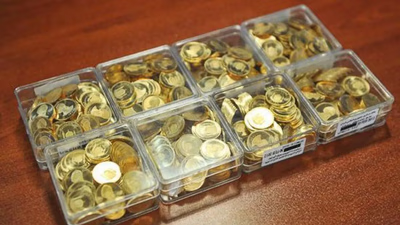
West Asia has long been a pivotal center for gold trading, leveraging its strategic location to facilitate trade between Europe, Asia, and Africa. Historical empires like the Persian Empire and the Ottoman Empire significantly influenced the development of this market. Gold is culturally significant in West Asian societies, symbolizing wealth and status, often exchanged during weddings and celebrations. Major trading hubs include Dubai, Istanbul, and Manama, which attract global buyers and sellers. The region boasts a robust financial infrastructure supporting gold investments through bullion banks and gold ETFs. Middle Eastern central banks maintain substantial gold reserves to diversify their holdings and stabilize currencies. Countries like the UAE, Saudi Arabia, and Turkey are notable for their significant reserves. Gold"s unique properties—its resistance to corrosion and tarnishing—make it a preferred choice for jewelry, particularly wedding bands.
The demand for gold surges during festive seasons such as Eid and Diwali, reflecting its status as a store of value. Additionally, West Asia is celebrated for its exquisite gold craftsmanship, with skilled artisans creating intricate designs that enhance the allure of gold jewelry. "








